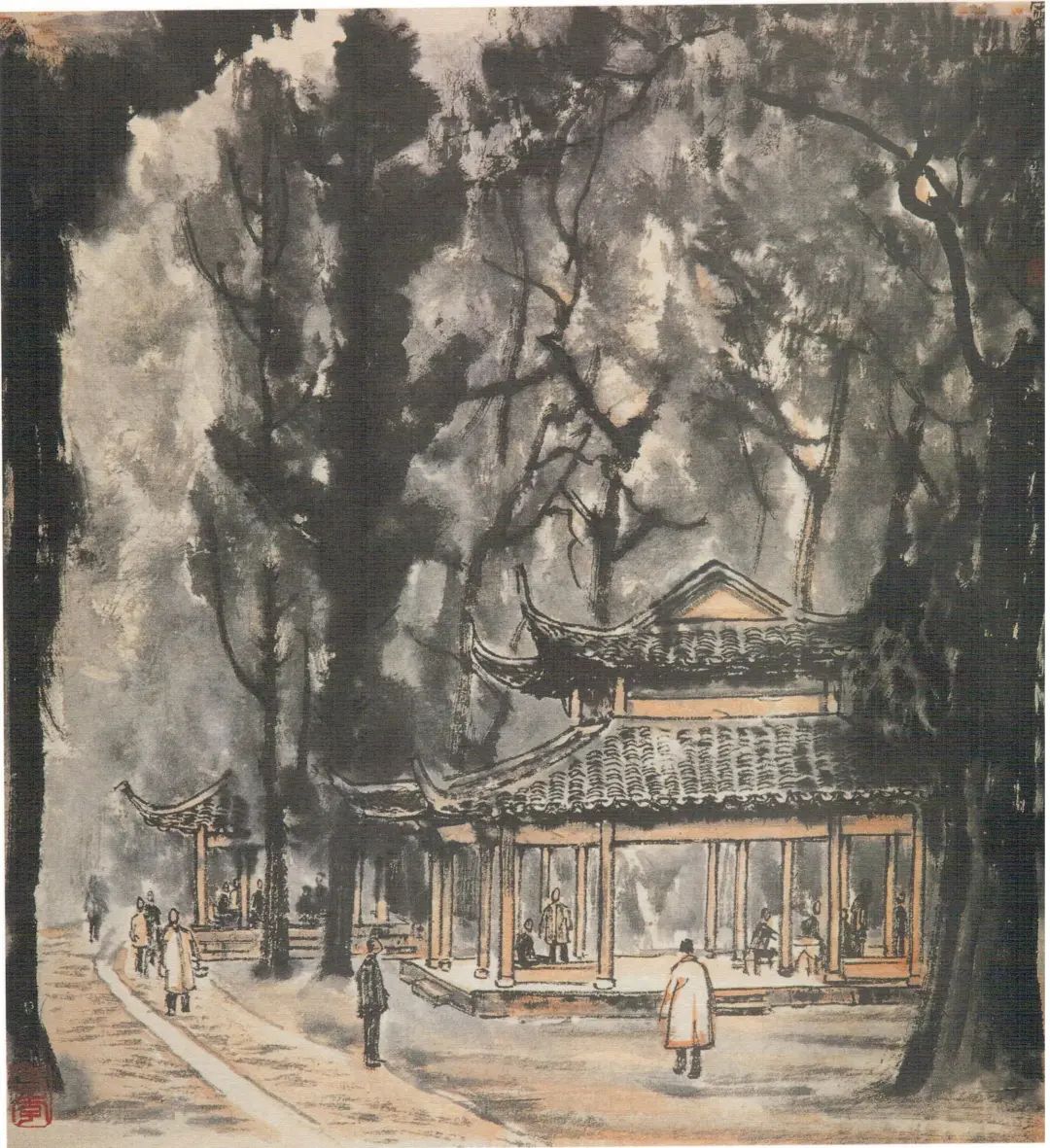Online painting and calligraphy works of famous artists appreciation (twenty-three)

Lingyin Erting
1965
69.2cm×46.5cm
inscription and postscript
Two Pavilions in Lingyin
Sketch by Kecheng
Seal
Kechen, Lao Li
Work Appreciation
Li Keran is very familiar with the Lingyin Temple in Hangzhou. The two pavilions of Lingyin depicted here are on the east side of the Feilai Peak of Lingyin Temple. The two pavilions, one in front of the other, are concealed under the ancient cypress trees. Next to the pavilions is a brick road leading into the distance. The main characters in the painting are the pavilion and the tree. The horizon is relatively low, and the pavilion in the close view is less than half the height of the picture. All that occupies the upper part of the painting are trees, which makes the trees appear taller and more open. The whole work is sketched in ink, and the pavilion and the ground are finally dyed with light ochre, with a focal perspective and a strong depth.
This work is characterized first and foremost by the brush and ink. All the pavilions are sketched with dry brush and burnt ink, and the pale and dry brush and ink are in line with the ancient feeling of the pavilion. The pavilion has more ink below the eaves, giving a sense of shadows, which cannot be found in the works of Qi Baishi and Huang Binhong. Li Keran has obviously borrowed the light and shadow method from Western painting, but in a more subtle way, which does not affect the traditional quality of the work in ink and wash as a whole. The trees are mainly painted with splashed ink, except for the old trunk and some branches, which are painted with dry brush, almost all of which are swept with wet, large brush strokes, thicker in the near and lighter in the far, showing the distance of space. During this year's sketching process, he explored how to let go of the constraints of the ink and brush pattern to deeply portray the object and express its richness, and also how to exert the expressive power of the brush and ink to show the strength and rhythm of the brush and ink.
The combination of Chinese and Western is always what he insists on, and the emphasis on traditional Chinese methods in the combination is also what he insists on. In doing so, he is undoubtedly very principled, but at the same time very difficult. (Lang Shaojun Published in Li Keran, 1982)